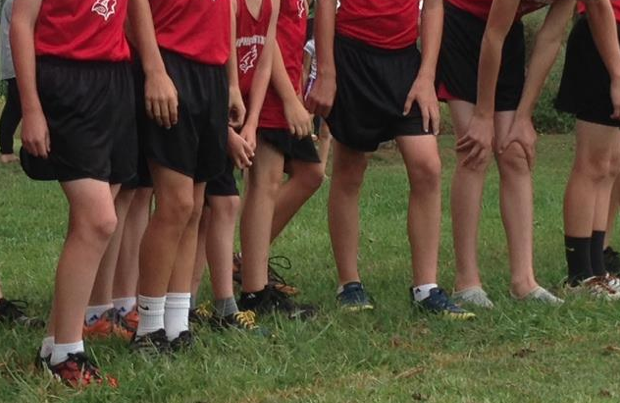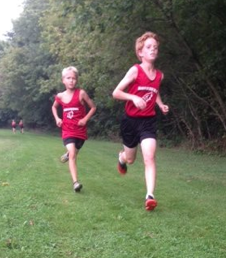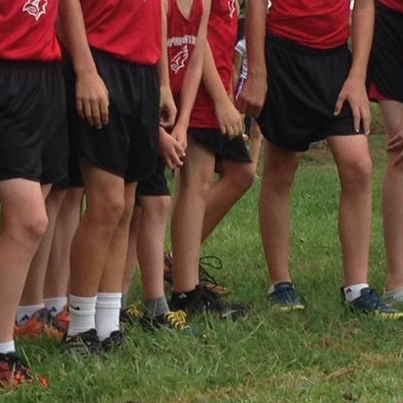 School has started. It’s a time when parents are buying their children new shoes for gym class, cross-country and everyday wear. Given what we know about childhood development and the elements of natural running gait movements, here are a few things to consider before you start shopping for shoes.
School has started. It’s a time when parents are buying their children new shoes for gym class, cross-country and everyday wear. Given what we know about childhood development and the elements of natural running gait movements, here are a few things to consider before you start shopping for shoes.
— Ultra-thin soles allow proper proprioception, neuromuscular activation in the entire kinetic chain and complement the body’s natural ability to absorb ground forces. Kids learn movement through ground feel. The foot is the foundation of it all.
— Low, flat-to-the-ground-profile shoes are best for all play activity that involves climbing, running and jumping. Shoes should not be up on a platform or have a steep slope from heel to forefoot. In technical jargon, you want to look for a shoe with a low heel-toe “drop” or offset.
— Supple materials allow for natural foot function. The shoe should bend easily at the toe joints—where a foot is designed to bend—and not impede the forming and stiffening of the arch on takeoff.
— A toebox wide enough to allow natural toe spread is important. The toes are small but mighty. The foot produces the most leverage when the toes are straight and aligned with the metatarsals. A child’s foot is widest at the ends of the toes (as should an adult’s be if they have been in proper shoes or barefoot).
— A single piece midsole/outsole allowing protection on unnatural surfaces (concrete, asphalt) and natural rough surfaces (rock, dirt, grass, woodchips) while allowing proprioception and natural dissipation of ground reaction forces.
— Look for shoes with soft, breathable and washable upper materials. Kids’ shoes can be washed on a washing machine or soaked in diluted bleach and allowed to air dry.
 Get over the notion that shoes need massive “traction.” If a shoe has too much stickiness and grip, there is more heat produced in the foot and higher braking moments (and increased torque) on running activity.
Get over the notion that shoes need massive “traction.” If a shoe has too much stickiness and grip, there is more heat produced in the foot and higher braking moments (and increased torque) on running activity.
Discourage kids from wearing thick, heavy socks as they interfere with foot proprioception and a “feel” for the ground.
Removing the sock-liner insole (if the shoe has one) can improve the foot’s interface with the ground.
Be aware of the effects of scale on shoe geometry and function. A 4mm heel-to-drop in a size 1 shoe creates a slope equivalent to a 12mm drop or more in an adult shoe 3–4 times longer. Also, a 40-pound girl cannot bend the midsole of a shoe that might be considered relatively flexible for a 165-pound man. The lighter the child, the more important it is that shoe can roll up with no effort.
Be cautious of putting cleated shoes on a very small child. Ground reactive forces are distributed over the whole foot and when only the small cleats engage the ground, as occurs with a light child and hard ground, the impact is loaded to the small areas.
Finally, running should be always fun for your child. And his or her shoes should never get in the way of this simple truth.


I put my 9 yr old son in zero drop barefoot shoes almost 2 yrs ago (school shoes, casual shoes and sports shoes). Last spring he complained of heel pain and had developed plantar faciaitus (sorry about spelling there!). He did much less exercise over a 9-week summer break and no longer has heel pain. But what to put him in now for every day wear and sport? Dilemma. Any feedback most welcome. I too have suffered from PF since transitioning from heel striking to mid-fore-foot landing and barefoot shoes. Sooooo reluctant to go back to non barefoot shoes.
Cherry all kids and adults need to hang out in a squat position like the kids do in the sandbox …this gets tissues loose, strong, and resilient. Mark
Hello there, You’ve done a fantastic job.
I’ll certainly digg it and personally recommend to my friends.
I am confident they will be benefited from this website.
I love your article but do you have any specific recommendations for kids shoes? Unfortunately, my 3 kids over-pronate and have flat feet like me.
I have just gotten them Pro- Kinetic Postural Insoles. But now I have just gotten Correct Toes for me and I think they may need Correct Toes too. But I am not sure what shoes to get us. I need them to be flat, wide enough for there toes and I want them to want to wear them so I need them to look fashionable (Two Daughters 8 and 10 years old) lol.
I want them to love to move like me. They do like to move but I see their ankles roll in when I look at them from the rear.
We are all kind of stuck and I don’t really know which way to go.
I see you mentioned Sketchers. Is that a good brand? If so, what model? Is another option better?
I appreciate your insights.
Thank you,
John
My son wear’s a 13.5, a 1 or a 2 (roughly 19cm foot length) and I am having a lot of trouble finding him a good shoe. For years we’ve used Merrell “glove” models, and they have been amazing, but Merrell has stopped making them. They have one “glove” model remaining for kids (The trail glove) but I have not been able to find these anywhere in his size and a lace-up shoe. Feelin’ really stuck here. I wear all Vivobarefoot but they don’t seem to have any products for his size or that are full “sneakers” for everyday year-round wear. There’s also shoes like “umi” or “seekairun” or “Keen” but these sites don’t speak directly to drop, flexibility, and toe box width. They tend to say vague things like “Built so the foot can work.” But of course I want the specifics to feel comfortable. Any assistance or recommendations for makes/models to check out is GREATLY appreciated. His foot is too big for his current shoes, which is a problem by itself.
(I did find and order the altra instinct jr, and am hopeful, but it took me a long time to find them…)
Thanks!
-KH
There’s certainly a great deal to find out about this issue. I love all the points you made.